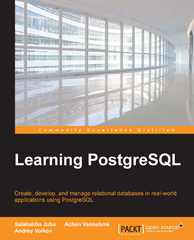Answered step by step
Verified Expert Solution
Question
1 Approved Answer
This code of matlab run a project of Segmentation by fourier and transform inverse Z , i want to explain in handwritting ALL the code
This code of matlab run a project of Segmentation by fourier and transform inverse Z i want to explain in handwritting ALL the code with maths equations, Just explain every step of the code i want maths expression explain To run just download any image of net like tomografy in dark scales and rename examplejpg or jpg
I dont want machine answers only math handwritting List of images
imageFiles EXAMPLEjpg;
numImages lengthimageFiles;
Parameters
sizeIm ;
dt ;
eps E;
Nx sizeIm;
Ny sizeIm;
Lx ;
Ly ;
Process each image
for idx :numImages
Load and process the image
A imreadimageFilesidx;
Im imresizeAsizeIm sizeIm;
Convert to grayscale if not already
if sizeIm
B rgbgrayIm;
else
B Im;
end
C doubleB:;
Grid dxdy in mesh
x linspace Lx Nx;
y linspace Ly Ny;
dx x x;
r epsdx;
Array initialization
unk Nx Ny; number of unknowns
M zerosunk unk;
Interior nodes
for ii :Nx
for jj :Ny
n ii jj Nx; convert point ij to mesh point
Mn n r dt; main diagonal
Mn n r; left of diagonal
Mn n r; right of diagonal
Mn nNx r; left far diagonal
Mn nNx r; far right diagonal
end
end
Boundary conditions
Left border
ii ;
for jj :Ny
n ii jjNx;
Mn nr dt;
Mn nr;
Mn nNx r;
Mn nNx r;
end
Right border
ii Nx;
for jj :Ny
n ii jjNx;
Mn nr dt;
Mn nr;
Mn nNx r;
Mn nNx r;
end
Lower border
jj ;
for ii :Nx
n ii jjNx;
Mn nr dt;
Mn n r;
Mn n r;
Mn nNxr;
end
Upper border
jj Ny;
for ii :Nx
n ii jjNx;
Mn nr dt;
Mn n r;
Mn n r;
Mn nNxr;
end
Upper left corner
jj Ny;
ii ;
for ii :NxNx
n ii jjNx;
Mn nr dt;
Mn nr;
Mn nNxr;
end
Right upper corner
jj Ny;
ii Nx;
for ii Nx: Nx
n ii jjNx;
Mn nr dt;
Mn nr;
Mn nNxr;
end
Lower right corner
jj ;
ii Nx;
for ii Nx: Nx
n ii jjNx;
Mn nr dt;
Mn nr;
Mn nNxr;
end
Bottom left corner
jj ;
ii ;
for ii :NxNx
n ii jjNx;
Mn nr dt;
Mn nr;
Mn nNxr;
end
Solve the system
Uvec MC;
Upix roundUvec;
UM reshapeUpix: sizeIm, ;
Display of the processed image
figure;
imagescUM;
colormapgray;
titleRescaling in Gray Tones Image numstridx;
Discrete Fourier Transform DFT
X fftdoubleB;
Display of the Discrete Fourier Transform
figure;
imshowlogabsfftshiftX;
colormapjet;
colorbar;
titleDiscrete Fourier Transform DFT Image numstridx;
Inverse Z Transform using IFFT
Y ifftX;
Display of the Inverse Z Transform
figure;
imshowabsY;
titleInverse Z Transform Image numstridx;
Segmentation by light intensity with custom colormap
level graythreshB;
binaryImage imbinarizeB level;
Custom Colormap parula in this case
colormapparula;
Shows the image segmented with the colormap
figure;
imagescbinaryImage;
axis equal;
axis off;
titleLight Intensity Segmentation Custom Colormap Image numstridx;
colorbar;
end
Step by Step Solution
There are 3 Steps involved in it
Step: 1

Get Instant Access to Expert-Tailored Solutions
See step-by-step solutions with expert insights and AI powered tools for academic success
Step: 2

Step: 3

Ace Your Homework with AI
Get the answers you need in no time with our AI-driven, step-by-step assistance
Get Started


